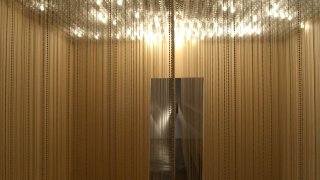
Experiencing kinetic art is as easy as turning on a lightbulb at the Dallas Museum of Art’s immersive exhibition, Movement: The Legacy of Kineticism, now on view through July 16.
Patrons enter the exhibition by walking through Brazilian artist Valeska Soares’ 2006 installation of Vagalume (Firefly), a series of overhead lightbulbs patrons can turn on and off by pulling on one of the hundreds of pull chains.
“It is an amazing experiential artwork that captures a childlike imagination. She was really inspired by the simple act of turning the light on and off when she was a kid and the flickering that it created like a firefly. But she was also playing with art historical legacy within Brazil,” said Dr. Anna Katherine Brodbeck, the museum’s Hoffman Family Senior Curator of Contemporary Art and organizer of this exhibition.

Get DFW local news, weather forecasts and entertainment stories to your inbox. Sign up for NBC DFW newsletters.
The installation is one of 80 works from the Dallas Museum of Art’s collection that uses optical effects of mechanical or manipulable parts to engage the viewer physically or perceptually. By combining two-dimensional paintings, three-dimensional sculptures, projections and interactive objects, the exhibition features artwork from three historical periods spanning a century.
“This exhibition demonstrates how artists working today have been influenced by the long legacy of dynamic abstraction,” Brodbeck said. “What was so exciting about this exhibition is it is actually an opportunity for us to premiere works that have been in the collection for many years that we haven’t been able to showcase.”
A gallery establishes the historical precedents rooted in the early 20th-century avant-garde movements of Suprematism, Constructivism and DeStijl when artists were using geometric abstraction to modify the relationship between the art and the viewer. Works by Piet Mondrian and El Lissitzky demonstrate the innovative thinking of this era that would inspire artists for decades to come.
“We were really interested in going back to the teens and 20s when artists were really interested in the revolutionary potential of geometry and abstraction. And they were also very interested in the influence of technology,” Brodbeck said. “They saw art almost dissolving into everyday life.”
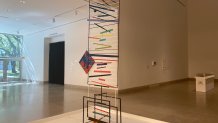
Inspired by Alexander Calder, George Rickey frequently used motors to mechanize his mobiles. His colorful mobile named after the United Nations building in New York, U.N. II, is distinctively different because of its lack of a motor.
The Scene
“This piece does move when there is airflow,” Brodbeck said.
Tomás Saraceno combines the activities of his favorite insect, science, and technology to create Sounding the Air. Fascinated by how spiders navigate space through “ballooning,” or floating on air currents, Saraceno recreates the phenomenon by using a computer-generated soundtrack based on the ethereal movement of the gallery environment and what looks like a very fine thread.
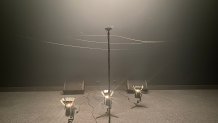
“This is actually spider silk you see,” Brodbeck said, adding the museum has spools of spider silk in case of any breakage. “He’s really interested in all the kinds of invisible energies surrounding us and creating a visual element of that.”
A small Zen-like sculpture, + and -, by Mona Hatoum represents a pattern of accumulation and destruction with a blade continuously cutting through sand, shaping, obliterating, and then reshaping hypnotic patterns. Born in a Palestinian family in Beirut, the artist is exploring loss, memory, and displacement.
“The idea of shifting borders has very poetic resonance in this work,” Brodbeck said.
Ricci Albenda’s Panning Annex is the ultimate optical illusion, using a video projector to silently reshape a gallery. The projector pans the neutral space continuously, creating a subtle but startling change.
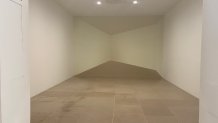
“He was really interested in creating an extension of the room that people were meant to stumble upon,” Brodbeck said.
The exhibition concludes with jewelry by designers who incorporated mechanical and interactive elements in their works. When worn, the jewelry moves.
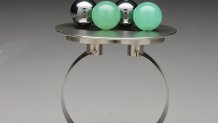
“Many of these artists were really interested in working across disciplines and dissolving art into daily life and there’s no better example of that than wearable art,” Brodbeck said.
Learn more: Dallas Museum of Art



